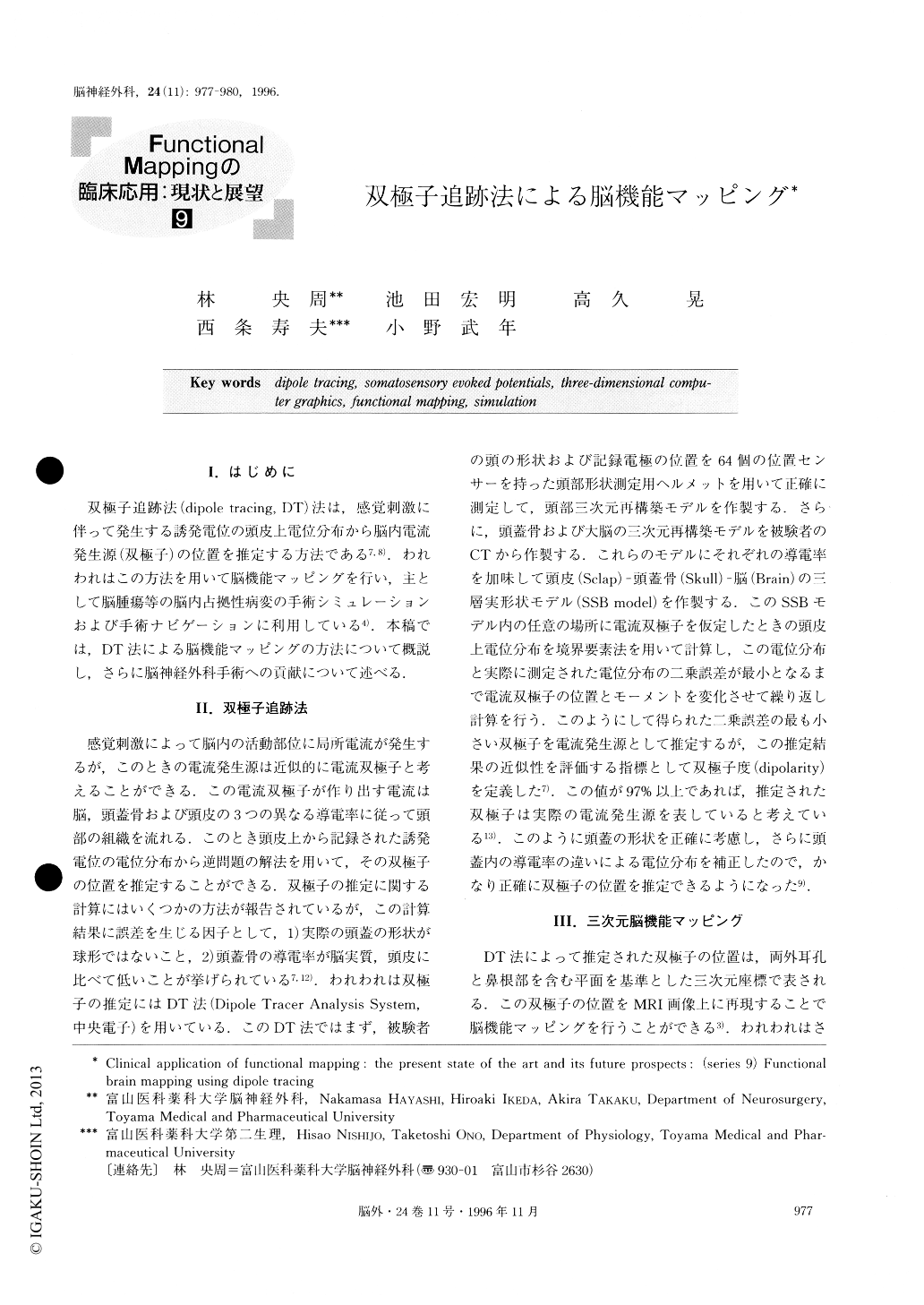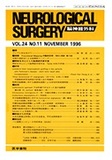Japanese
English
連載 Functional Mappingの臨床応用—現状と展望・9
双極子追跡法による脳機能マッピング
Clinical application of functional mapping:the present state of the art and its future prospects:(series 9) Functional brain mapping using dipole tracing
林 央周
1
,
池田 宏明
1
,
高久 晃
1
,
西条 寿夫
2
,
小野 武年
2
Nakamasa HAYASHI
1
,
Hiroaki IKEDA
1
,
Akira TAKAKU
1
,
Hisao NISHIJO
2
,
Taketoshi ONO
2
1富山医科薬科大学脳神経外科
2富山医科薬科大学第二生理
1Department of Neurosurgery, Toyama Medical and Pharmaceutical University
2Department of Physiology, Toyama Medical and Pharmaceutical University
キーワード:
dipole tracing
,
somatosensory evoked potentials
,
three-dimensinal computer graphics
,
functional mapping
,
simulation
Keyword:
dipole tracing
,
somatosensory evoked potentials
,
three-dimensinal computer graphics
,
functional mapping
,
simulation
pp.977-980
発行日 1996年11月10日
Published Date 1996/11/10
DOI https://doi.org/10.11477/mf.1436901295
- 有料閲覧
- Abstract 文献概要
- 1ページ目 Look Inside
I.はじめに
双極子追跡法(dipole tracing,DT)法は,感覚刺激に伴って発生する誘発電位の頭皮上電位分布から脳内電流発生源(双極子)の位置を推定する方法である7,8).われわれはこの方法を用いて脳機能マッピングを行い,主として脳腫瘍等の脳内占拠性病変の手術シミュレーションおよび手術ナビゲーションに利用している4).本稿では,DT法による脳機能マッピングの方法について概説し,さらに脳神経外科手術への貢献について述べる.

Copyright © 1996, Igaku-Shoin Ltd. All rights reserved.


